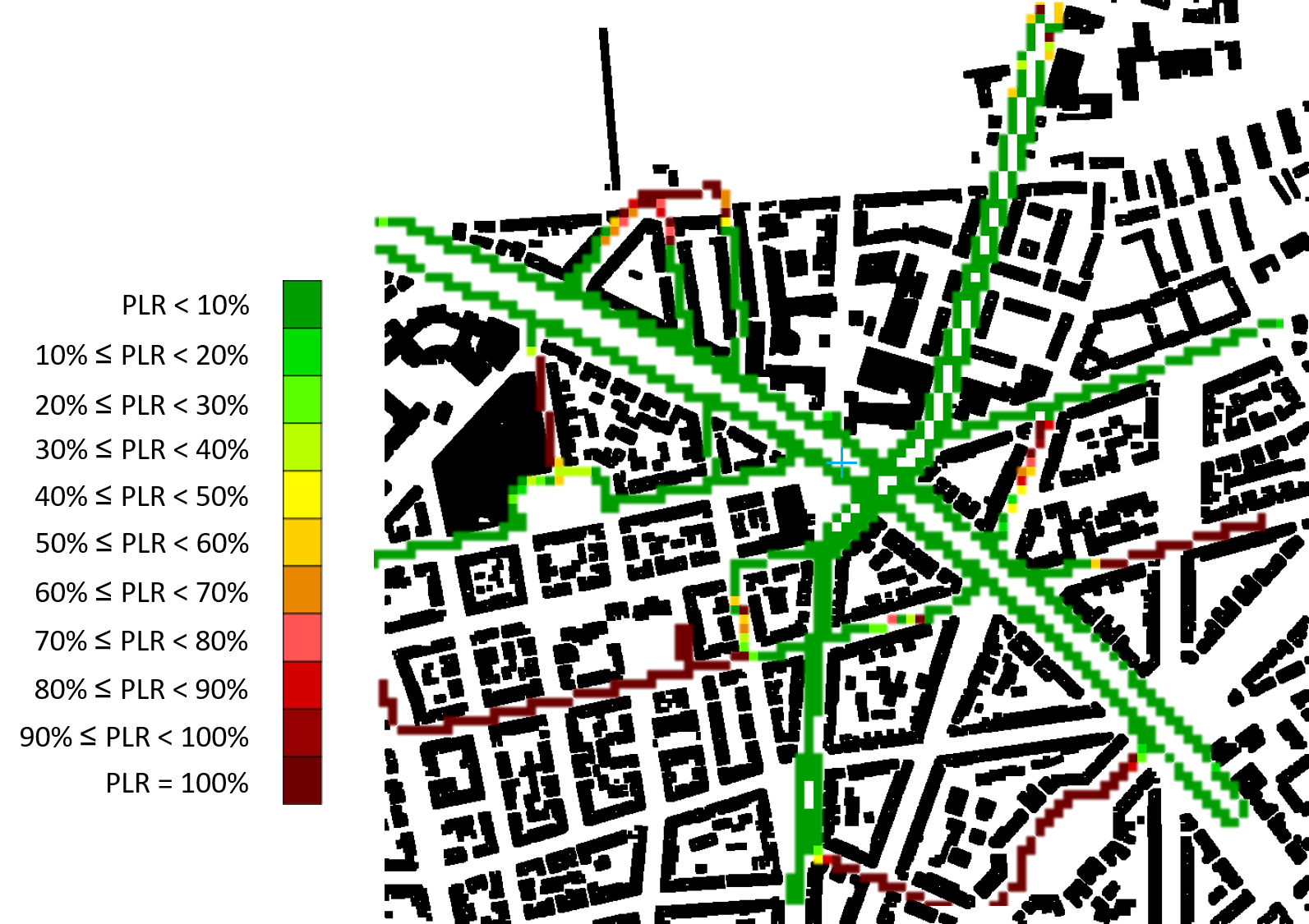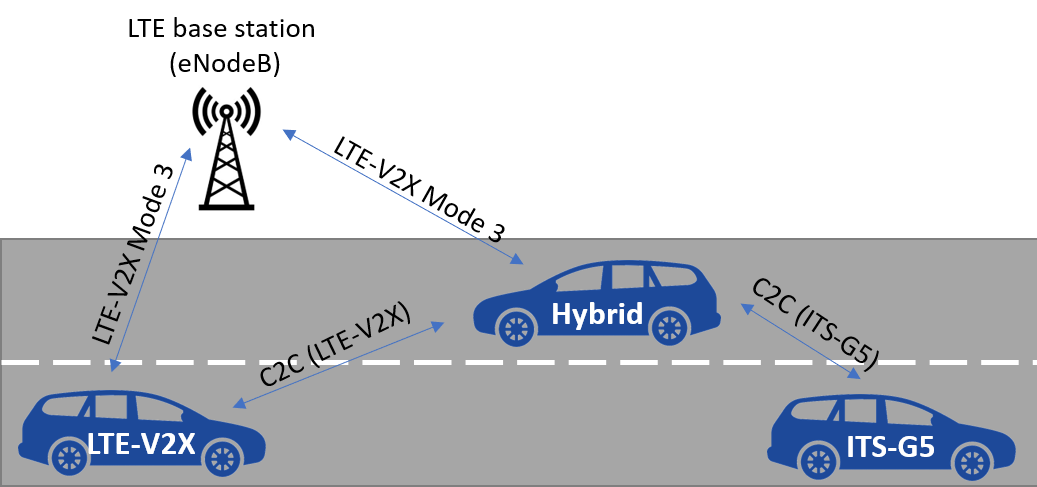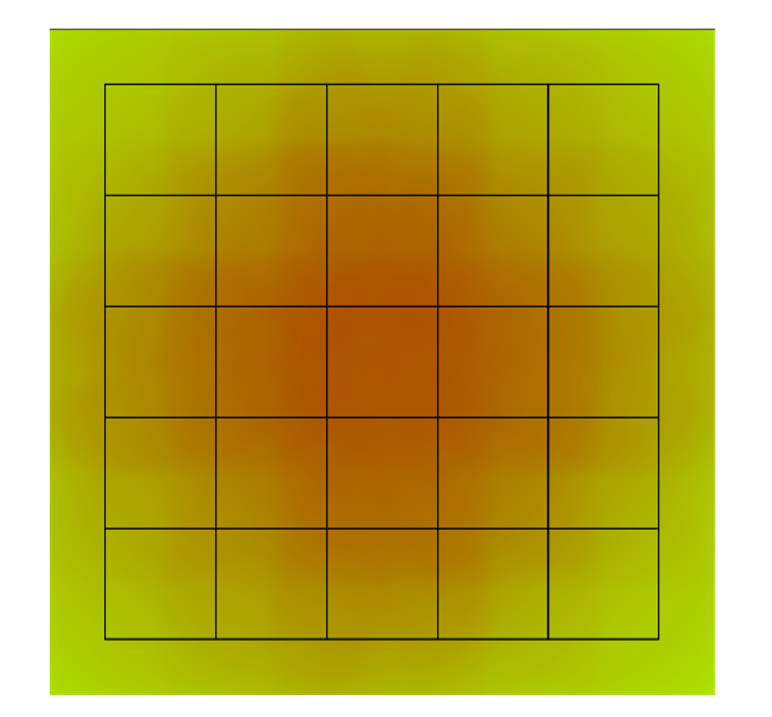Vehicular-to-Everything Communications
Project description
The communication of vehicles with their environment is generally summarized under the term vehicle-to-everything communication (V2X). This collective term covers vehicle-to-vehicle communication (V2V), vehicle-to- infrastructure communication (V2I) and vehicle-to-pedestrian communication (V2P).
The aim of V2X communication is to enable an exchange of individual knowledge between the single road users to provide each participant with a more complete and resilient perception of the traffic environment. This is intended to increase the road safety and improve traffic efficiency.
The exchange of information requires appropriate transmission technologies capable of meeting the high demands of the dynamic environment created by a network of highly mobile participants. The use of decentralized Vehicular Ad-hoc Networks (VANET) enables such dynamic networks. The distribution of messages in such networks usually takes place as a form of a connectionless, spatially limited broadcast. In this way, it is not necessary for the transmitting system to know all the possible recipients in his environment. This procedure is crucial for the transmission of safety-critical messages, as all participants always receive all the provided information within the transmission range.
Two transmission technologies are available for V2X, specifically designed for this kind of communication. The first approach is based on the Wi-Fi standard IEEE 802.11p and operates in the frequency range around 5.9 GHz. For Europe, the ITS-G5 standard was derived from this. The second approach is an extension of the mobile communications standard LTE. With LTE-V2X direct transmissions can also be realized, even without cellular base stations ITS-G5 is the older of the two technologies and is intended for the rollout of V2X communication in Europe. The first standards were published around 2009. Since 2020, the first vehicles with ITS-G5 systems have been on public roads.
As part of the process to provide an entire communication stack for ITS-G5, proprietary protocols and message formats were standardized specifically for V2X communication.
LTE-V2X was introduced with Release 14 of the Third Generation Partnership Project (3GPP) in 2017. It provides a cellular-based transmission technology for V2X.
It also uses an ad-hoc network and broadcast for the transmission of safety-critical messages. LTE-V2X can be used in the 5.9 GHz frequency range as well as in one of the standard LTE bands.
Despite the highly overlapping performance range, the individual transmission technologies have specific advantages and disadvantages. Previous research has shown that ITS-G5 often has shorter latencies than LTE-V2X. LTE-V2X, on the other hand, seems to be more efficient with the resources on the radio channel and allows more flexibility in the selection of transmission parameters, which should enable higher data rates.
The hybrid usage of both technologies may arise from the need to operate differently equipped vehicles in the same region. The main objective of this perspective is to ensure interoperability with the aim of exchanging information across technologies and avoiding mutual interferences. But it is also possible to think about a targeted hybrid usage in which both technologies complement each other constructively.
In the context of our investigation, ways of a usage of ITS-G5 and LTE-V2X constructive in a common network are to be evaluated. For the selection of the transmission technology, the requirements of the respective safety-critical use case as well as the respective traffic and environmental situation were taken into account. In a highly dynamic traffic environment, the aim is to increase the reliability of the transmission of the information that helps to avoid dangerous conflicts and collisions between road users.
In order to develop such concepts, a simulation environment was created that can represent road traffic in a wide variety of environments as well as provide models for communication via the respective transmission technology.
The modeling of the realistic transmission properties of the two technologies is crucial for the simulation of the communication as well as for the decision-making process in the selection algorithm of the technology to be used. In order to select the transmission technology in a concept that promises the best performance in the given situation, the model must be able to predict the characteristics of the technologies as well as possible.

In preparation for carrying out robust simulations, it seems necessary to expand the existing stochastic models for message transmission in V2X networks or create new ones. For this purpose, own measurements were done in real traffic areas, which should provide the data base for these improved models.
Contact
Communication
Birkenweg 8
64295 Darmstadt
Office: D16, 210
Communication
Birkenweg 8
64295 Darmstadt
Office: D16, 210

